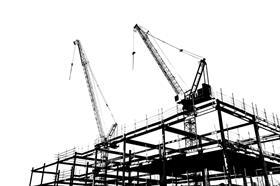Markit/CIPS survey records weaker rise in housing activity

Construction output slowed in July as growth in the housing market showed signs of cooling, according to the latest Markit/CIPS survey of purchasing managers.
The index hit 57.1 in July, down slightly on June’s four-month high of 58.1. The 50.0 mark separates growth in output from contraction.
The index revealed a loss of momentum across the UK construction sector, with business activity and new work expanding at slower rates than the previous month.
The index reported that the pace of job creation at construction companies remained strong in July and ongoing skill shortages contributed to a further drop in subcontractor availability, making it the 25th month running to see a fall. The index also reported that subcontractor charges again rose at the fastest rate since the survey began in 1997.
UK construction companies are upbeat about their growth prospects over the next 12 months, with 55% expecting an increase in business activity.
Tim Moore, senior economist at Markit, said: “July’s growth slowdown is the first for three months and perhaps a sign that the post-election impact on construction confidence has started to diminish.”
Residential building saw the greatest loss of momentum according to the survey data and civil engineering also expanded at a slower pace. However commercial activity enjoyed its fastest growth since March.
David Noble, chief executive at CIPS, said: “Budget cutbacks and delayed decision-making will have had some impact on civil engineering activity,” adding that “new business wins were less in evidence as backlogs were tackled”.
Moore said that in the commercial sector construction companies saw “a particularly strong appetite for new development projects among clients”.
He added that the slowdown in residential activity highlighted that the “house building sector is struggling to gain momentum despite supportive demand conditions”.
“Survey respondents commented on a variety of growth constraints afflicting the residential building sector, including long lead-in times for new projects, scarce supplier capacity, skill shortages and stretched sub-contractor availability.”



























No comments yet